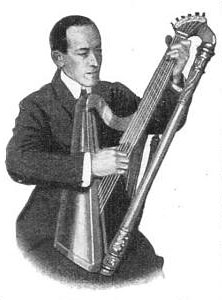
Here is a wonderful new discovery – a previously unknown invention from 1918 by one R. E. Bates, of New York, and later Connecticut.
I first heard of this last year, during my initial foray into the online Music Trade Review archives. It had only this tantalizing mention and description:
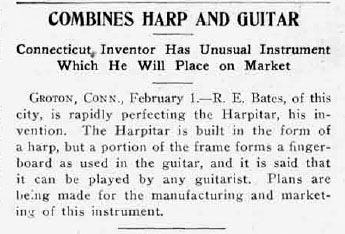
I resigned myself to the near certainty that I would never learn exactly what this mysterious invention was.
Thank heavens for Google Books! Just today I did a search on Bates and harpitar – and there I found this Popular Science Monthly article, complete with a woodcut of Bates (I presume) and his instrument!
Turns out it is exactly as described – a small harp with a 6-string guitar neck. Is it a “harp guitar”? Yes! But in “name only.” Surprisingly, this exact concept has never been seen among all the other harp-framed guitars archived in the “Harp Guitars” in Name Only gallery. There’s the Pacquet with strings emanating from a harp-like soundboard, but not in the right plane – the guitar neck is parallel to the soundboard, almost as normal. The single-neck Mast and the double-neck Grosjean – which are the exact opposite of the Pacquet – are interesting, but not sufficient either, with their normal guitar neck and soundboard geometry, formed in the shape and frame of a harp.
Bates’ ingenious creation actually gets the clever guitar/harp hybrid concept “right.” The strings come off the “harp” soundboard just as in a normal harp (or Alan Carruth’s sub-bass soundboard on his similarly impossible instrument) – and then the neck runs under this same plane so that it can be played like a normal guitar – a perfect marriage of the two instruments’ key features. (Now Alan’s next task is simply to duplicate this idea but with extra floating strings – that would indeed be my type of “true” harp guitar and his!)
Curiously, the PSM article appeared in September 1918 (with talk of gearing up for production), but the MTR notice (with similar talk of production) appeared almost 3 years later in the Feb 5, 1921 issue. Why the gap with no change of status? Could a Harpitar still exist? Doubtful. The woodcut shows that Bates must have built a working instrument (and possibly a very decent one). Whether he found anyone to build additional instruments seems unlikely.
Nevertheless, keep your eyes out for this one!
P.S.: This is yet another example of not only rare, undiscovered information in the valuable Music Trade Review archives, but also that a single cryptic clue might lead to something more concrete and wonderful. So I’ll never stop asking. Anyone retired or bored who enjoys scanning old periodicals online please volunteer for research!

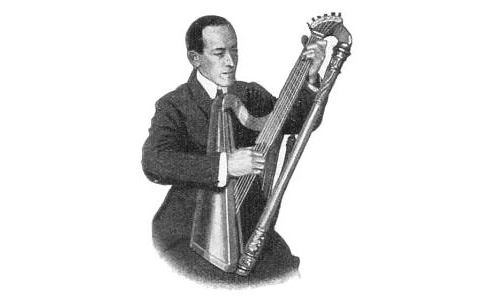
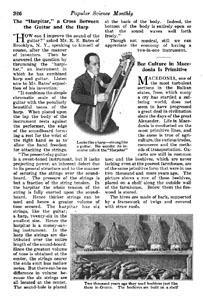
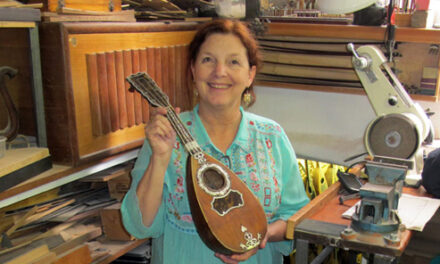
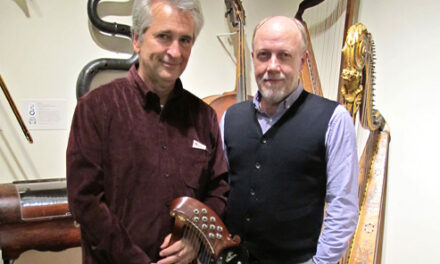
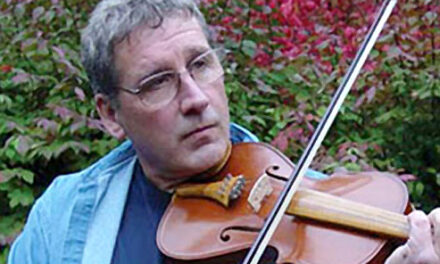
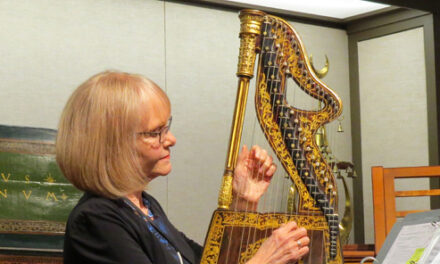
Alan – I agree, the intonation would have been extremely problematic, and one would need to figure out how to keep the “backwards” fan fretting to a minimum.
Still – do I sense a challenge coming on?
I actually thought of something like that as one variation on the ‘true’ harp guitar theme, although it would not fit your definition, as it has no sub-bases. That, as you point out, would be easy enough to fix once you’ve got the rest worked out. In fact, both sub-bases and super trebles would just ‘fall out’ of such a design.
The big issue is, of course, what to do about the soundboard pulling up. Even a small harp soundboard can pull up by 1/4″ in the center, and shortening the strings that much at the bridge end would wreck the intonation. I thought of at least one way around that problem, but it’s hard to say if the Bates instrument uses that, or some other method: there’s not enough detail in the picture.
Note the ‘fanned frets’…